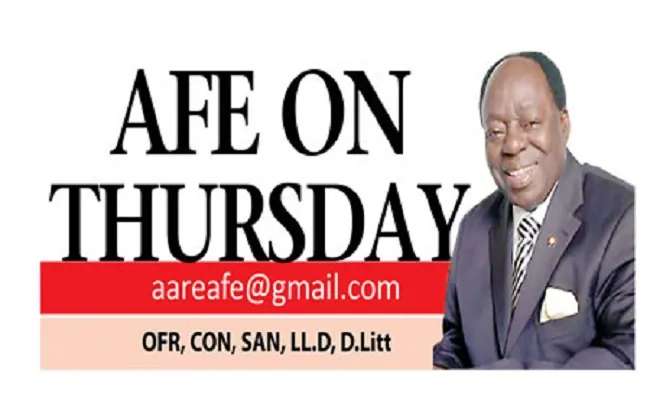The modality for choosing a Pope
THE election of a Pope, known as the papal conclave, is one of the most solemn and secretive procedures in the world. Rooted in centuries of tradition and canon law, the process underscores the weight and spiritual authority of the Papacy within the Roman Catholic Church. When a Pope dies or resigns (as Pope Benedict XVI did in 2013, the first resignation since Gregory XII in 1415), the Church enters a period known as sedevacante (Latin for “the seat being vacant”). During this time, the College of Cardinals assumes collective responsibility for the governance of the Church but refrains from making any major decisions until a new Pope is chosen.
The election process is conducted by the College of Cardinals, the body of senior Church officials appointed by previous Popes. Only cardinals under the age of 80 are eligible to vote. These electors, typically numbering between 100 and 130, gather in Vatican City and are secluded in the Apostolic Palace, with the actual voting held inside the Sistine Chapel beneath Michelangelo’s iconic fresco of the Last Judgment. The term conclave derives from the Latin cum clave, meaning “with a key,” symbolizing the strict isolation and confidentiality of the proceedings. No communication with the outside world is permitted until a new Pope is elected.
Voting occurs up to four times per day, two sessions in the morning and two in the afternoon. Each Cardinal writes his chosen candidate’s name on a secret ballot. A two-thirds majority is required to elect a Pope. After each round, ballots are burned in a special stove inside the Chapel. Chemicals are added to produce black smoke (fumatanera) if no one has been elected or white smoke (fumatabianca) when a new Pope has been chosen. The sight of white smoke from the chimney atop the Sistine Chapel signals to the faithful gathered in St. Peter’s Square, and to Catholics worldwide, that a new spiritual leader has been selected.
Once a candidate receives the necessary majority, the Dean of the College of Cardinals asks him, in Latin: “Do you accept your canonical election as Supreme Pontiff?” If he accepts, he is then asked: “By what name shall you be called?” The chosen name often reflects the new Pope’s spiritual priorities, drawing inspiration from previous Popes or Saints (e.g., Pope Francis chose his name in honor of St. Francis of Assisi, symbolizing humility and concern for the poor). The newly elected Pope is then dressed in papal vestments and presented to the world on the central balcony of St. Peter’s Basilica, where the Cardinal Protodeacon proclaims, “HabemusPapam!” (“We have a Pope!”). The new Pontiff then offers his first apostolic blessing: UrbietOrbi, to the City of Rome and to the world.
A comprehensive overview of the Popes—Titles and origins
Since the establishment of the papacy with Saint Peter in the 1st century A.D., the Roman Catholic Church has been led by a succession of 267 Popes. While the majority hailed from Italy, the papacy has also seen leaders from various other nations, reflecting the universal nature of the Church. Below is a summarized list highlighting notable Popes, their titles, and countries of origin:
• Saint Peter (c. 30–64 A.D.) – The First Pope, originating from Judea. • Pope Gregory I (Gregory the Great) (590–604) – Doctor of the Church, Italy. • Pope Leo III (795–816) – Crowned Charlemagne as Emperor, Italy. • Pope Urban II (1088–1099) – Initiated the First Crusade, France. • Pope Innocent III (1198–1216) – Influential in Church Reforms, Italy. • Pope Clement V (1305–1314) – Moved Papacy to Avignon, France. • Pope Martin V (1417–1431) – Ended the Western Schism, Italy. • Pope Leo X (1513–1521) – Pope during the onset of the Protestant Reformation, Italy. • Pope Pius IX (1846–1878) – Longest-reigning Pope, Italy. • Pope John XXIII (1958–1963) – Convened the Second Vatican Council, Italy. • Pope John Paul II (1978–2005) – First Polish Pope, Poland. • Pope Benedict XVI (2005–2013) – First German Pope in centuries, Germany. • Pope Francis (2013–2025) – First Pope from the Americas, Argentina. • Pope Leo XIV (2025–Present) – First U.S.-born Pope, United States.
Throughout history, the papacy has been predominantly Italian, with over 200 Popes from Italy. Other countries with notable numbers include France (19), Greece (14), Syria (8), Germany (6), Africa (3), Spain (2), and others such as Argentina, England, Austria, Palestine, the Netherlands, and Poland. The choice of papal names often reflects the new Pope’s intended focus or homage to predecessors. For instance, Pope Francis chose his name to honor St. Francis of Assisi, symbolizing humility and care for the poor. Similarly, Pope Leo XIV selected his name to evoke Pope Leo XIII, known for his advocacy for workers’ rights
This lineage of Popes underscores the evolving nature of the Catholic Church, adapting to the spiritual and temporal needs of its global congregation while maintaining continuity through apostolic succession.
Pope Leo XIV: A humble shepherd and a historic first for America
The election of Cardinal Robert Francis Prevost as Pope Leo XIV marks a historic milestone, as he becomes the first American-born pontiff in the history of the Roman Catholic Church. Born in Chicago and holding dual U.S.-Peruvian citizenship, Pope Leo XIV brings a wealth of pastoral experience and a reputation for humility and compassion. His extensive missionary work in Peru and his role as a bridge-builder have been widely recognized. Cardinal Timothy Dolan highlighted Pope Leo XIV’s qualifications, emphasizing his alignment with the spiritual leadership role traditionally sought in a pope.
The United States has expressed immense pride and joy over Pope Leo XIV’s election. President Donald Trump publicly celebrated the moment as a great honor for the nation, expressing his approval and enthusiasm on social media. Pope Leo XIV’s election has also been met with congratulations from various world leaders, including Peruvian President Dina Boluarte and King Charles. His inaugural homily emphasized the need for the Church to shine amid global darkness, reflecting his commitment to continuing the legacy of openness and support for the marginalized.
ALSO READ FROM NIGERIAN TRIBUNE: Ogbomoso joins Ibadan, rejects Alaafin as permanent chair of Obas council
I join millions of Catholics and people of goodwill around the world in congratulating Pope Leo XIV on his historic election as the first American-born Pope. His life of service, humility, and commitment to bridging cultures offers hope and inspiration to a global Church facing both challenges and renewal. I prayerfully wish him a long life filled with wisdom, peace, and a fruitful tenure as he leads the Catholic faithful into a new era of unity, compassion, and spiritual growth.
Nigeria and the Papal future: A rising contender
As the Catholic Church continues to evolve, with increasing calls for global representation, one lingering and hopeful question remains: When will a Nigerian become Pope? While Nigeria has not yet seen one of its own ascend to the papacy, Africa is not new to the papal throne. In the early centuries of the Church, three Popes of African origin led the faithful: Pope Victor I (reigned c. 189–199), Pope Miltiades (reigned 311–314), and Pope Gelasius I (reigned 492–496), all believed to have come from Roman North Africa, present-day regions of Tunisia or Algeria.
Please send your comments to president@abuad.edu.ng
AARE AFE BABALOLA, OFR, CON, SAN, LL.D (Lond.)
These early African Popes played pivotal roles in shaping Christian doctrine and governance during foundational periods of the Church.
In contemporary times, Nigeria stands out as a vibrant beacon of Catholic faith. A recent global study revealed that 94% of Nigerian Catholics attend Mass at least weekly, a statistic unmatched by most countries. Among the nation’s most notable clerics is Cardinal Peter EbereOkpaleke, the Bishop of Ekwulobia, who is widely respected for his theological depth, humility, and unwavering pastoral commitment. He represents a generation of African leaders ready to serve at the highest levels of the Church.
Yet, despite this spiritual fervor and leadership capacity, systemic challenges persist. Only 18 of the current 135 cardinal electors hail from Africa, compared to 53 from Europe, revealing a disproportion that continues to affect the balance of papal possibilities. Nonetheless, Nigeria’s rising global profile, its rich intellectual contributions to Catholic theology, and the moral credibility of its clergy suggest that the prospect of a Nigerian pope is no longer merely aspirational—it is increasingly feasible.
The journey may be long, but the signs are encouraging. As the Church embraces diversity and reflects the demographic heart of Catholicism, which is now firmly in the Global South, Nigeria remains a strong and spiritually prepared contender for the papacy in the future.


